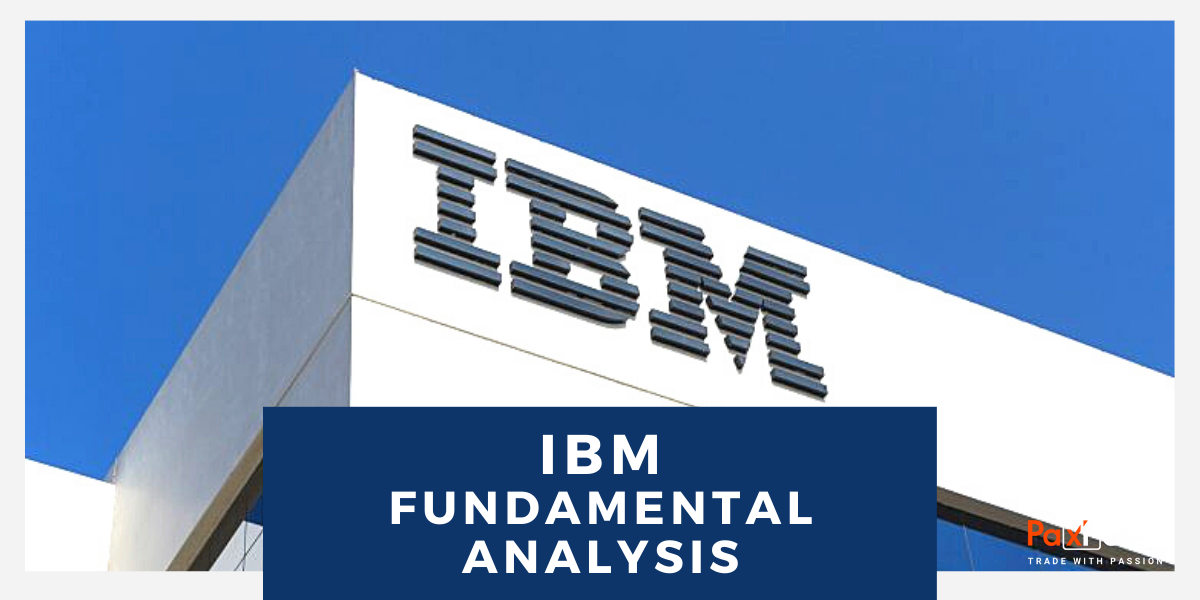
Source: PaxForex Premium Analytics Portal, Fundamental Insight
During its decade-long transformation, International Business Machines (IBM) has strategically shifted its focus to two key areas: hybrid cloud computing and artificial intelligence (AI). The company has established dedicated platforms for each, with Red Hat's widely used software playing a central role in the hybrid cloud domain, while the newly launched watsonx platform spearheads IBM's foray into AI.
Despite divesting numerous businesses as part of its turnaround strategy, IBM has retained one of its oldest and enduring ventures - the manufacturing of mainframes, a technology it has been involved in since the 1950s. Although the mainframe segment is not as pivotal for IBM as it once was, these robust systems continue to find widespread use in specific industries. Each sale of a mainframe system contributes additional revenue through software, services, and financing.
As of the end of 2022, 45 of the world's top 50 banks relied on IBM's mainframe systems. IBM periodically releases new lineups of mainframes, with the latest iteration, the z16, announced in April 2022 and made available the following month.
The z16 brought forth numerous innovations, notably featuring an integrated AI accelerator capable of executing AI inferencing workloads in real time. This breakthrough allowed financial institutions to employ AI for on-the-fly transaction analysis, thereby mitigating the risk of fraud. A single z16 system exhibited the capability to process an impressive 300 billion inference requests per day with just one millisecond of latency.
Anticipating the customary schedule of mainframe launches, IBM is expected to unveil its next mainframe system in the third or fourth quarter of 2024. Traditionally, the introduction of a new mainframe triggers an upgrade cycle, significantly boosting revenue in the infrastructure segment.
In the third quarter of 2022, marking the first full quarter of z16 availability, sales of mainframe systems experienced an impressive 98% year-over-year surge. This robust performance propelled total infrastructure revenue up by 23% year over year, likely influencing additional sales of software and services.
IBM's mainframe systems seamlessly integrate with the company's hybrid cloud platform, enabling customers to modernize their infrastructures while retaining the use of mainframes. A key advantage of IBM mainframes is their longevity, allowing applications written decades ago in COBOL, an older programming language still prevalent in critical systems, to run on today's mainframes without compatibility issues.
The prevalence of code written in COBOL poses a challenge for companies reliant on such code, especially as COBOL is no longer commonly taught, leading to a shrinking pool of software engineers capable of maintaining these applications. Recognizing this challenge, IBM introduced a solution in October - watsonx Code Assistant for Z. This generative AI-powered assistant is specifically trained to translate COBOL applications into modern Java code. This innovation provides customers with a means to modernize their software without abandoning the mainframe, presenting IBM with an additional revenue stream from its mainframe customer base.
After navigating a fluctuating pattern of revenue growth and declines for several years, IBM has now positioned itself for consistent growth, barring any significant economic downturn. The company has found its stride as a provider of platforms, software, and consulting services for enterprises seeking to modernize their IT infrastructures and embrace artificial intelligence technology. Although the mainframe segment is not a growth driver like hybrid cloud and AI, it plays a pivotal role in both domains.
IBM anticipates a 3% to 5% revenue increase this year, excluding the impact of currency fluctuations. The introduction of a new mainframe in the coming year is expected to bolster sales in the latter half of 2024. However, with numerous variables at play, the company is likely to refrain from issuing guidance for 2024 until its next earnings report in January. The state of the economy remains a wildcard that could influence IBM's revenue by a few percentage points in either direction.
While a new mainframe launch will provide a temporary boost to IBM's top line, it is the company's strategic efforts to reposition itself for the cloud and AI era that will be the primary drivers of sustained long-term growth.
As long as the price is above 156.00, follow the recommendations below:
- Time frame: D1
- Recommendation: long position
- Entry point: 160.92
- Take Profit 1: 166.00
- Take Profit 2: 170.00
Alternative scenario:
If the level of 156.00 is broken-down, follow the recommendations below:
- Time frame: D1
- Recommendation: short position
- Entry point: 156.00
- Take Profit 1: 152.00
- Take Profit 2: 146.00













